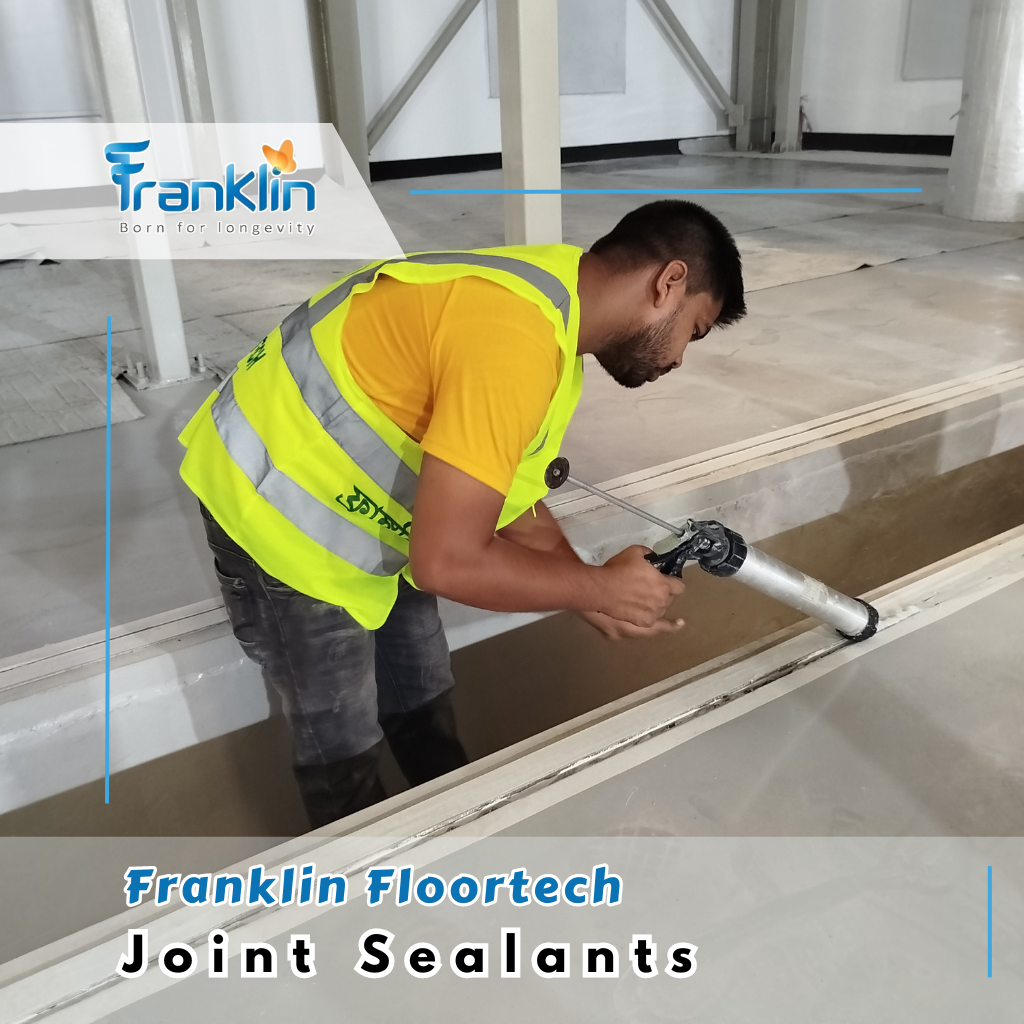Franklin
Joint Sealants
Flexible jointing materials, commonly known as sealants, serve the purpose of sealing or filling gaps between two structural elements to accommodate thermal movements. These sealants are crucial in construction to prevent water infiltration, air leakage, and to ensure structural integrity.

There are various types of joint sealants used in different applications:
Civil Engineering Sealants: These are used in civil engineering structures such as bridges, dams, highways, and tunnels to seal joints and prevent water ingress, thereby enhancing the longevity of the structures.


Building Sealants: Building sealants are utilized in buildings and other structures to seal gaps between building components like windows, doors, and facades. They provide weatherproofing, soundproofing, and thermal insulation.
Pavement Sealants: Pavement sealants are applied in road construction and maintenance to seal cracks and joints in pavements, preventing water penetration and preserving the structural integrity of the road surface.


Polyethylene Filler Board & Backup Cord: These materials are used as backing materials for sealants in construction joints. They provide support to the sealant and help control its depth and shape during application.
Overall, sealants play a crucial role in maintaining the durability, safety, and aesthetics of various structures by preventing moisture ingress, controlling thermal movements, and enhancing the overall performance of the construction joints.



Joint sealants provide numerous benefits in construction projects, contributing to the longevity, performance, and aesthetics of structures.
1. Water and Air-tightness: Sealants create a watertight and airtight barrier when applied to joints, preventing water ingress, air leakage, and the intrusion of dust, pollutants, and insects. This ensures the integrity of the building envelope and enhances indoor comfort and air quality.
2. Flexibility: Sealants possess elasticity, allowing them to accommodate movement caused by thermal expansion and contraction, settlement, and seismic activity. This flexibility prevents cracks from forming in joints, minimizing the risk of water infiltration and structural damage.
3. Aesthetics: Sealants come in a variety of colors and finishes, allowing them to blend seamlessly with the surrounding materials and maintain the visual appeal of the structure. They can also be tinted to match specific architectural requirements, enhancing the overall aesthetics of the building.
4. Durability: High-quality sealants are formulated to withstand exposure to harsh environmental conditions, including UV radiation, temperature fluctuations, and chemical exposure. This durability ensures long-term performance and extends the lifespan of the sealed joints.

5. Energy Efficiency: By sealing gaps and cracks in the building envelope, sealants improve energy efficiency by reducing air leakage and heat transfer. This helps maintain consistent indoor temperatures, reduces the workload on HVAC systems, and lowers energy consumption, resulting in cost savings and environmental benefits.
6. Reduced Maintenance: Properly installed sealants require minimal maintenance over their lifespan, reducing the need for costly repairs and replacements. Regular inspection and maintenance of sealants can further prolong their effectiveness and prevent issues such as water damage, mold growth, and structural deterioration.

In summary, joint sealants play a vital role in ensuring the performance, durability, and sustainability of buildings by providing waterproofing, air sealing, flexibility, aesthetic enhancement, energy efficiency, and reduced maintenance requirements.




